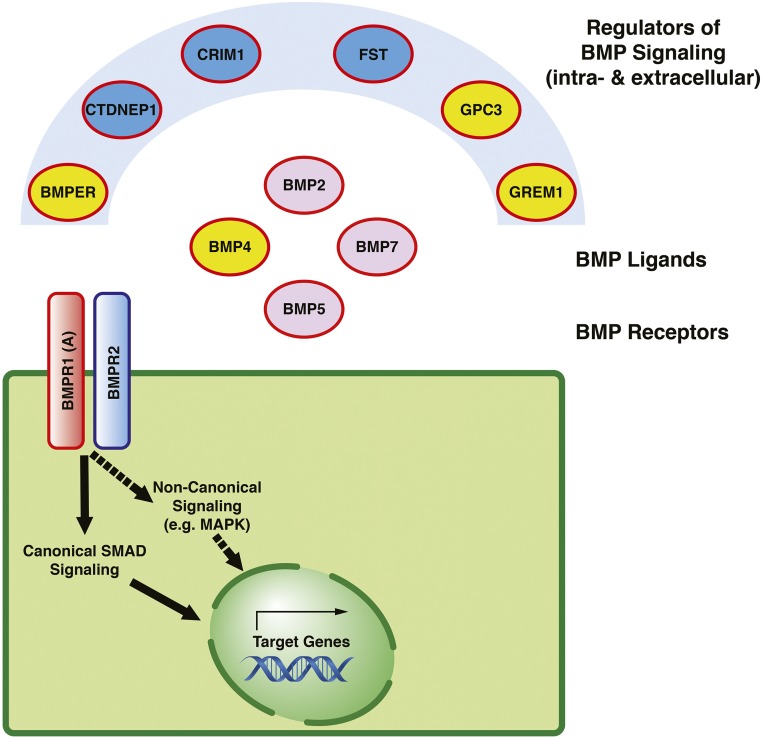Figure 4.
Members of the BMP signaling cascade with a role in CAKUT. Proteins encoded by genes that, if mutated, cause murine CAKUT are outlined in red, and proteins highlighted in yellow constitute causes of isolated and/or syndromic manifestations of human CAKUT (Supplemental Table 4). BMPs act as ligands for two classes of transmembrane serine-threonine-kinase receptors on the surface of the corresponding effector cells (e.g., bone morphogenic protein receptor type 1A [BMPR1A] and BMPR2).155 After activated, these receptors initiate intracellular signaling cascades, including canonical SMAD signaling and noncanonical signaling (e.g., via mitogen-activated protein kinase [MAPK]), which eventually result in increased expression of distinct target genes in the cell nucleus.175,176 The cellular consequences of BMP signaling depend on the location and local concentration of the BMP ligand.177 The availability of ligands for receptor binding is regulated by diverse intra- and extracellular antagonists and agonists of BMP and includes, for example, Gremlin 1 (GREM1), Follistatin (FST), and bone morphogenic protein binding to the endothelial regulator (BMPER).178–180 Please note that, BMPR2, although depicted in the figure, has not been implicated in the pathogenesis of CAKUT to date. CRIM1, cysteine-rich transmembrane bone morphogenic protein regulator 1; CTDNEP1, CTD nuclear envelope phosphatase 1; GPC3, Glypican 3.

